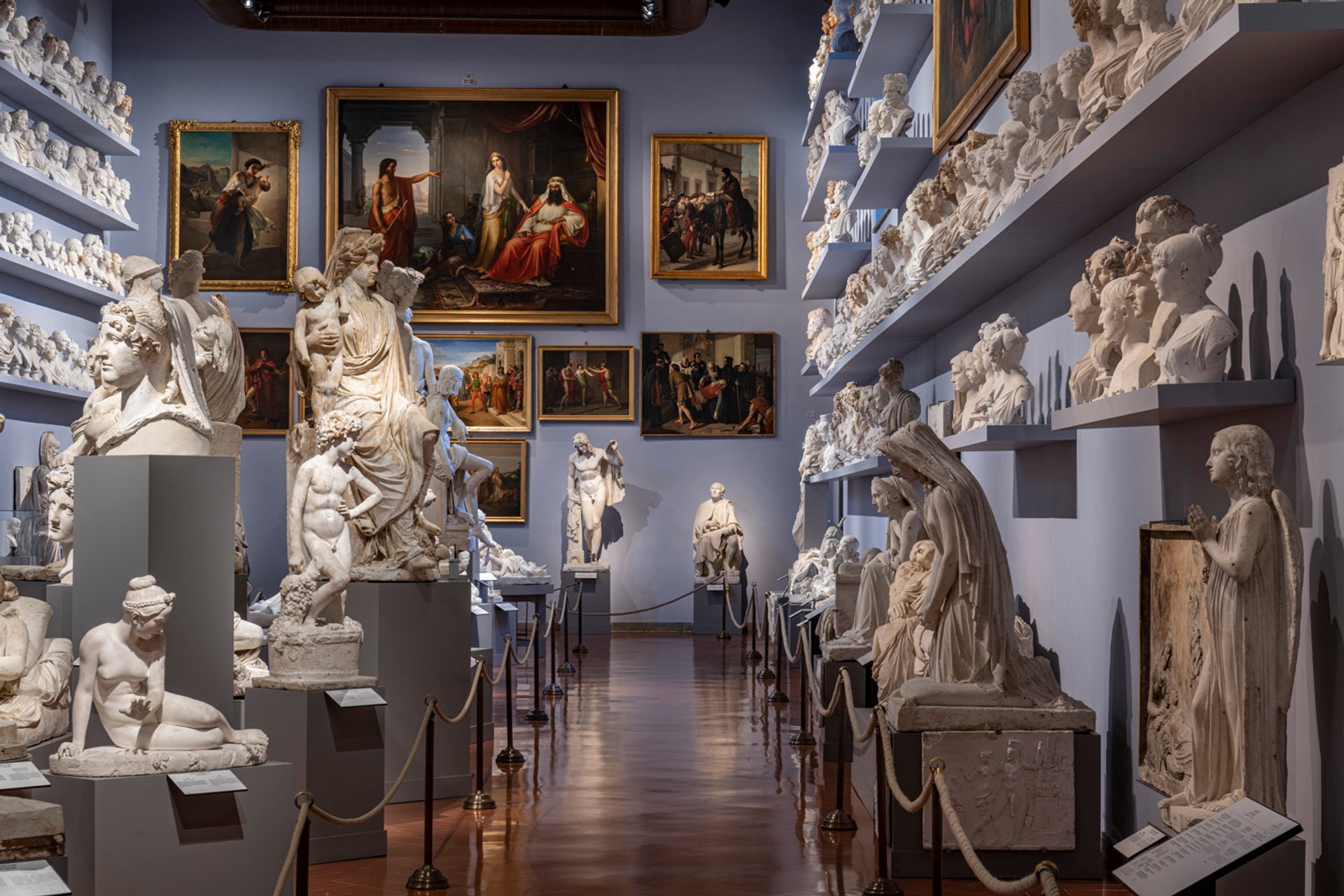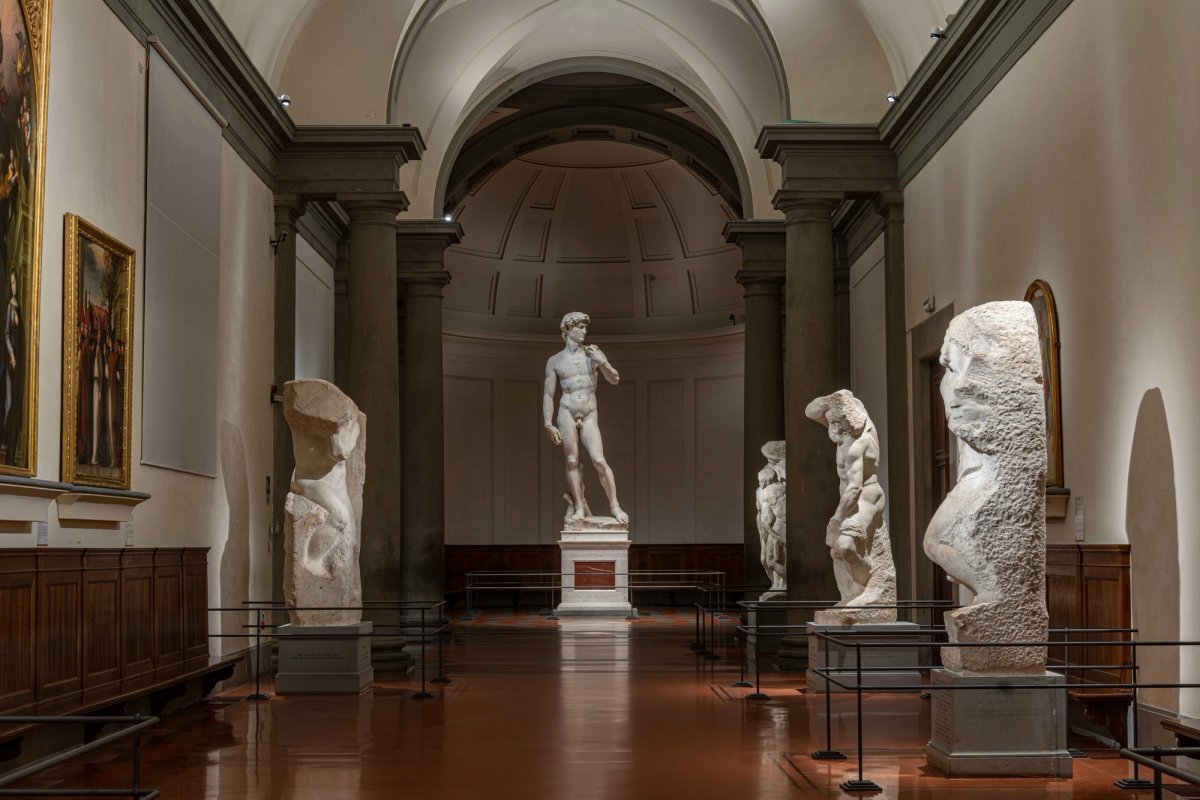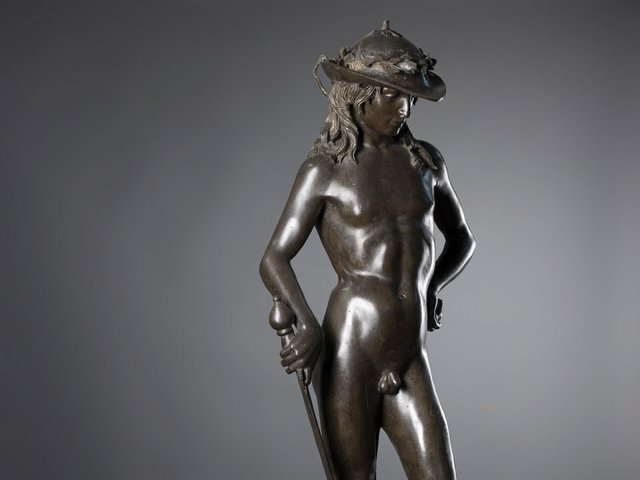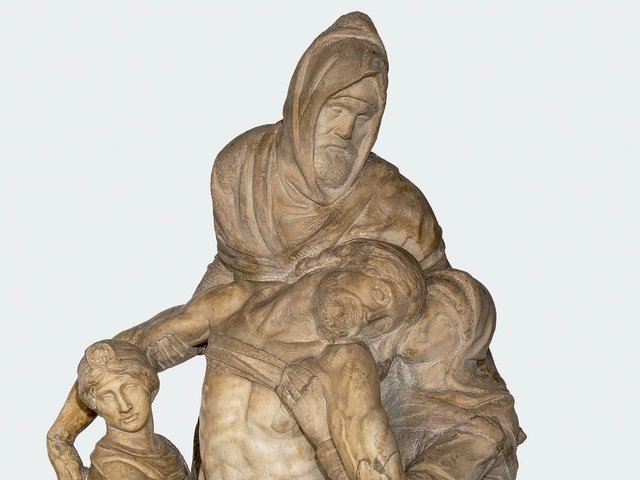Florence’s Galleria dell'Accademia museum is wrapping up a two-year overhaul this week with the debut of two projects: LED-based lighting for Michelangelo’s masterpiece David (1501-04) and the opening of the reinstalled Gipsoteca Bartolini, its gallery of 19th-century plaster casts.
For some three-and-a-half centuries after its completion, David stood in Florence’s main public square, the Piazza della Signoria, until it was moved in 1873 into the Accademia to protect it from damage. Later installed under its own skylight in the museum’s specially constructed Tribune del David gallery, opened in 1882, the statue now benefits from a newly cleaned skylight as well as an LED system created by Enel, Italy’s multinational electricity and gas company, headquartered in Rome.
New high-tech lighting will also enhance the museum’s other notable Michelangelo sculptures: the four unfinished slaves, or prisoners, known as the Prigioni, which now also have individual LED lighting. Before, the works were only visible by indirect room lighting, the Accademia’s director Cecilie Hollberg says. “You had the sensation that the Prigioni were a kind of yellow-beige, and the David was white. But now everybody is white.”

The reinstalled Gipsoteca Bartolini. Photo: Guido Cozzi
The 19th-century character of the Accademia, housed in two buildings dating back to late-medieval and early Renaissance Florence, was enhanced in the 1980s, when the museum inaugurated the Gipsoteca, devised to display the original plaster casts of Tuscan sculptor Lorenzo Bartolini (1777-1850). Known for his Neoclassical marble depictions of figures ranging from Napoleon’s sister, Elisa Bonaparte Baciocchi, to British aristocrats who ordering souvenir busts to take home from the Grand Tour, the artist now has finished marble sculptures in the Louvre and New York's Metropolitan Museum of Art.
The Gipsoteca—which also includes notable works by Bartolini's pupil, Luigi Pampaloni, and a small selection of 19th-century paintings—is filled with over 400 plaster casts, whose rougher surfaces may actually be preferable to contemporary tastes than the colder, harder marble versions. Hollberg says the Gipsoteca’s myriad faces suggest something like a large gathering speaking in hushed tones. “It’s filled with people telling stories,” she says. “You can hear them whisper.”




